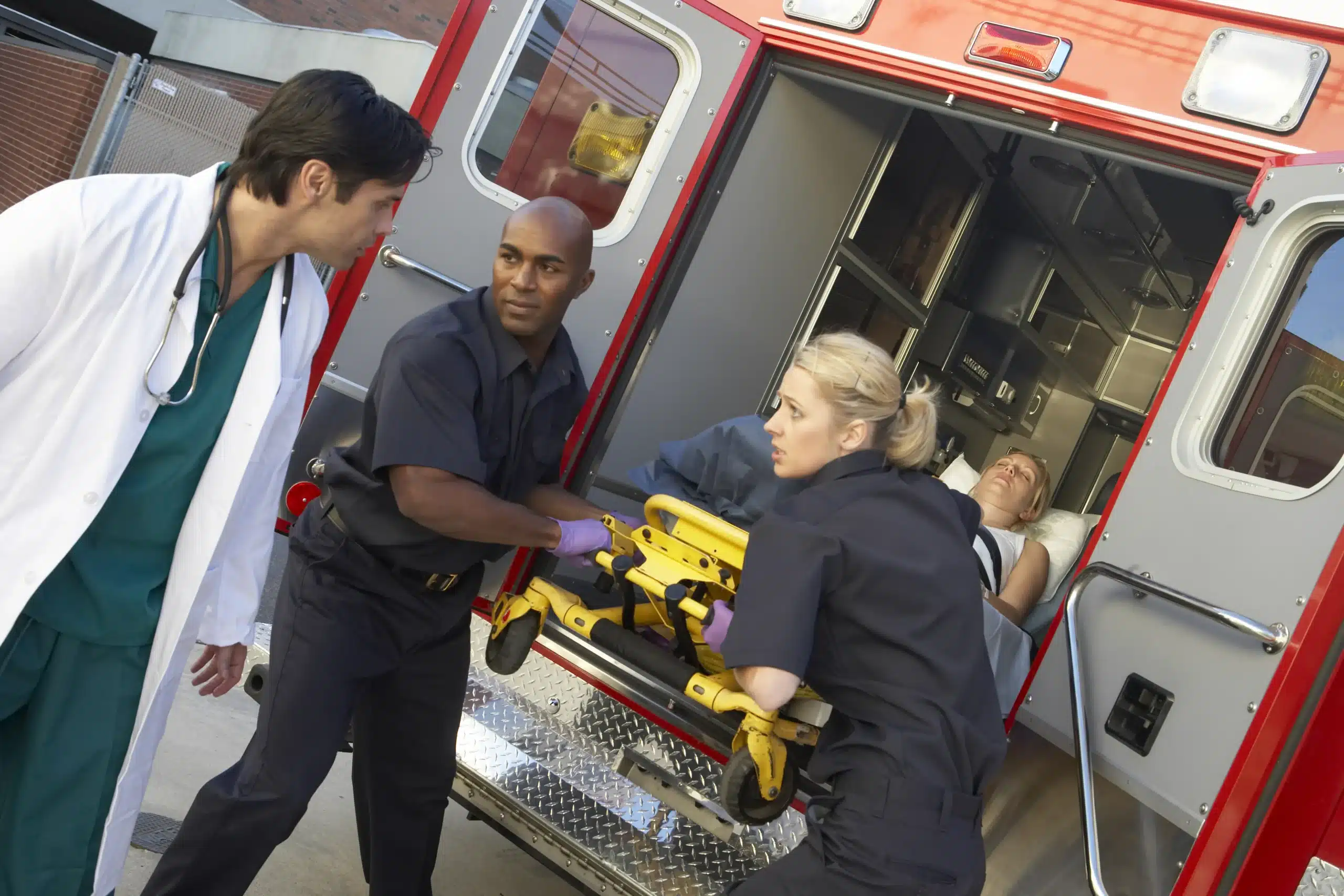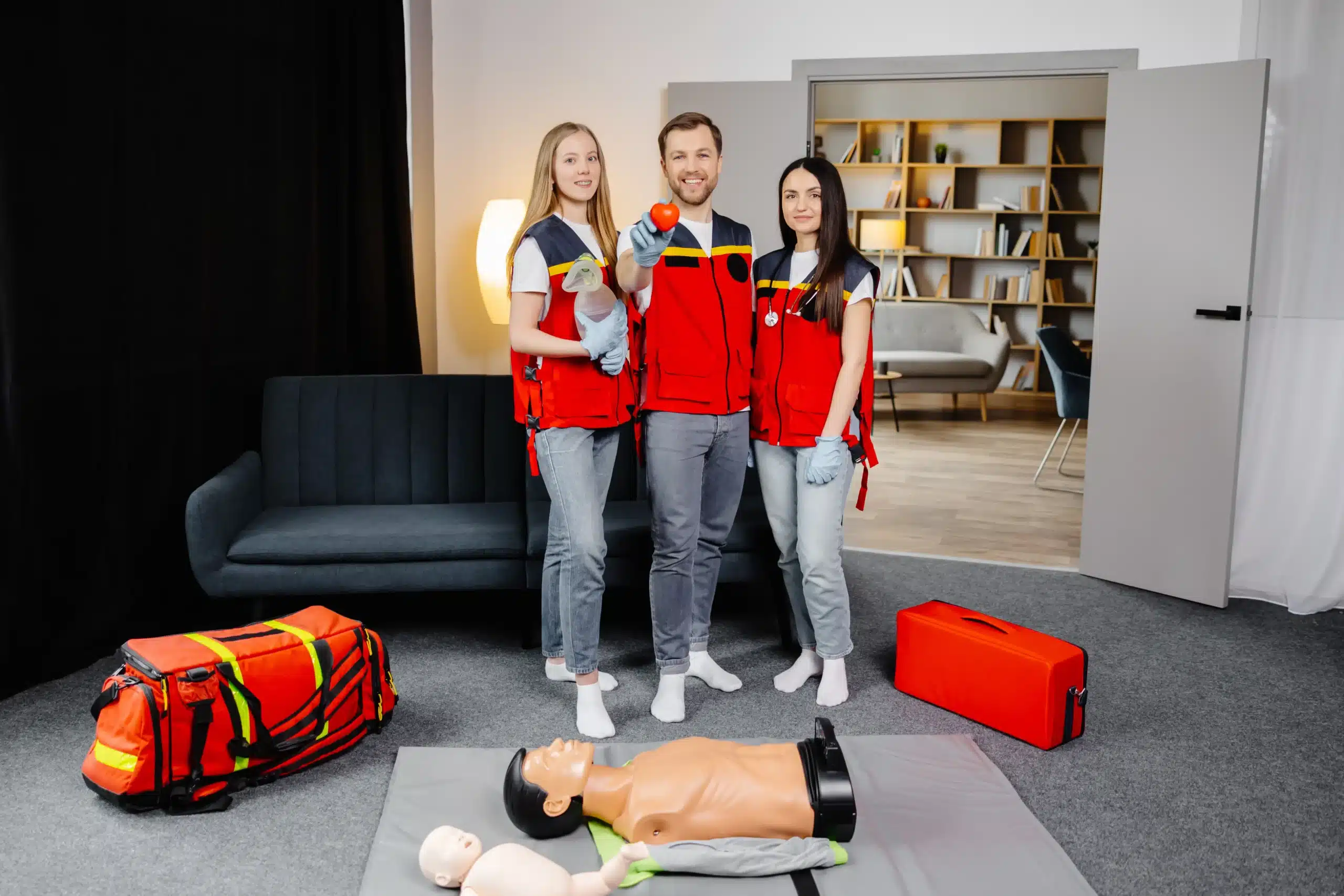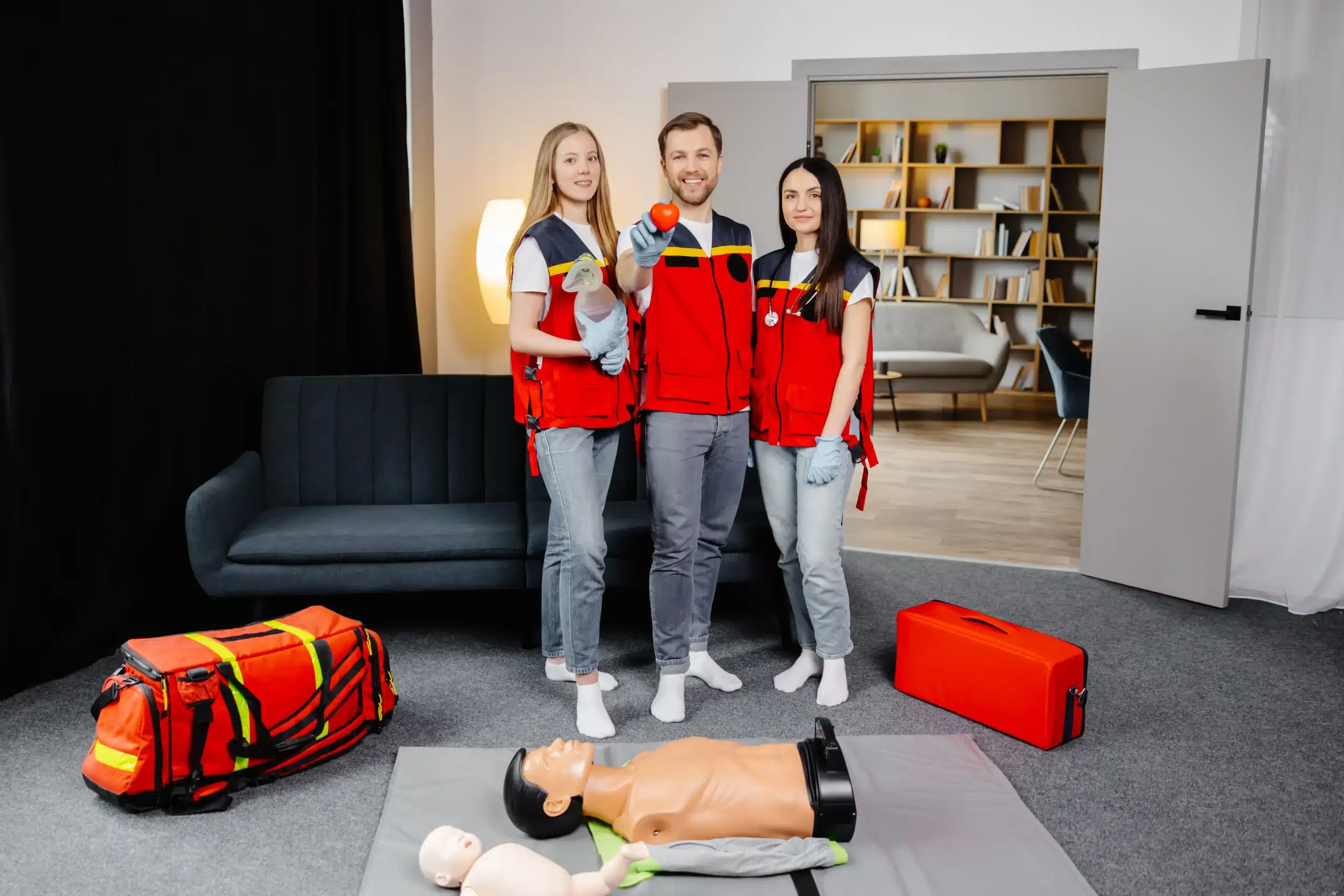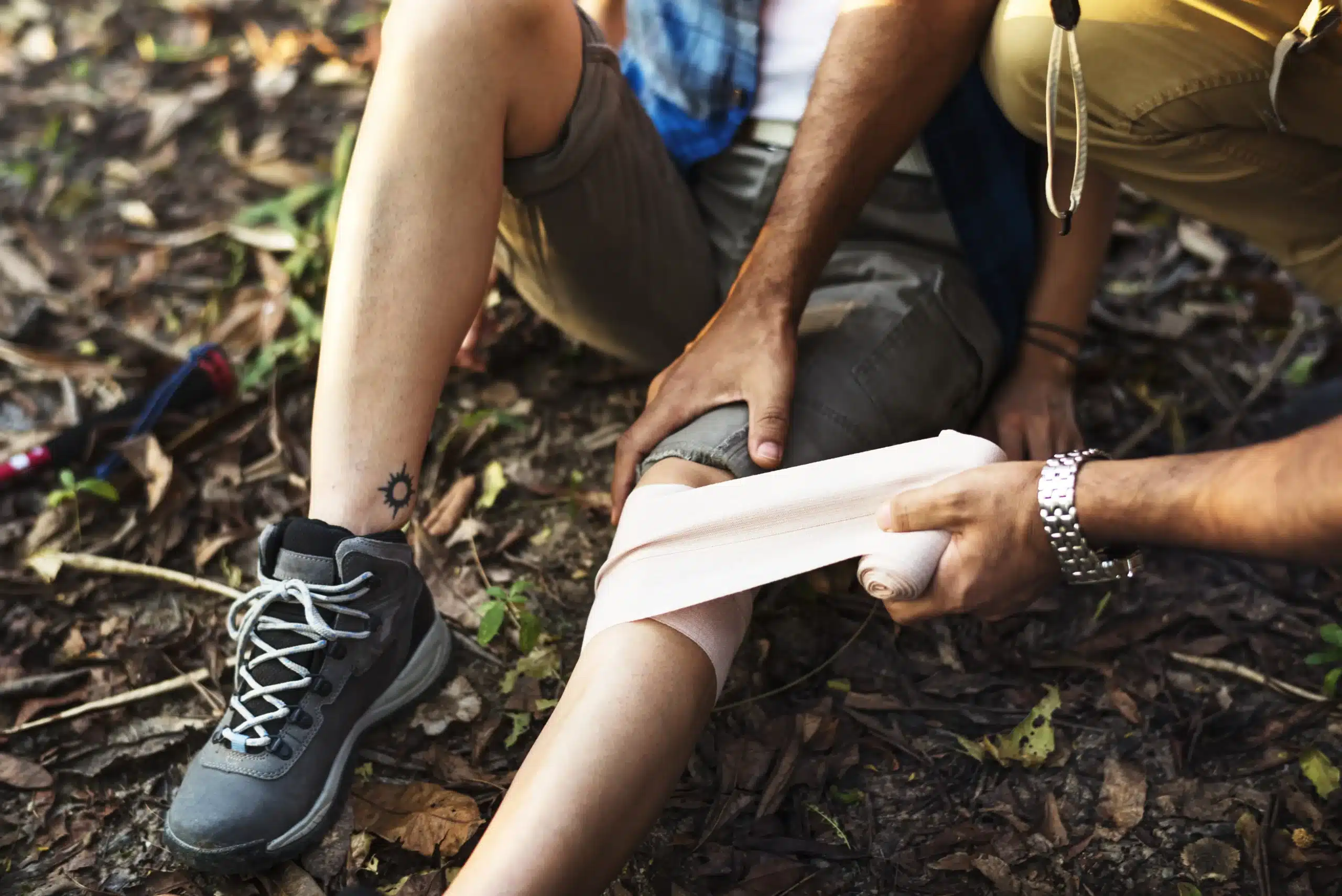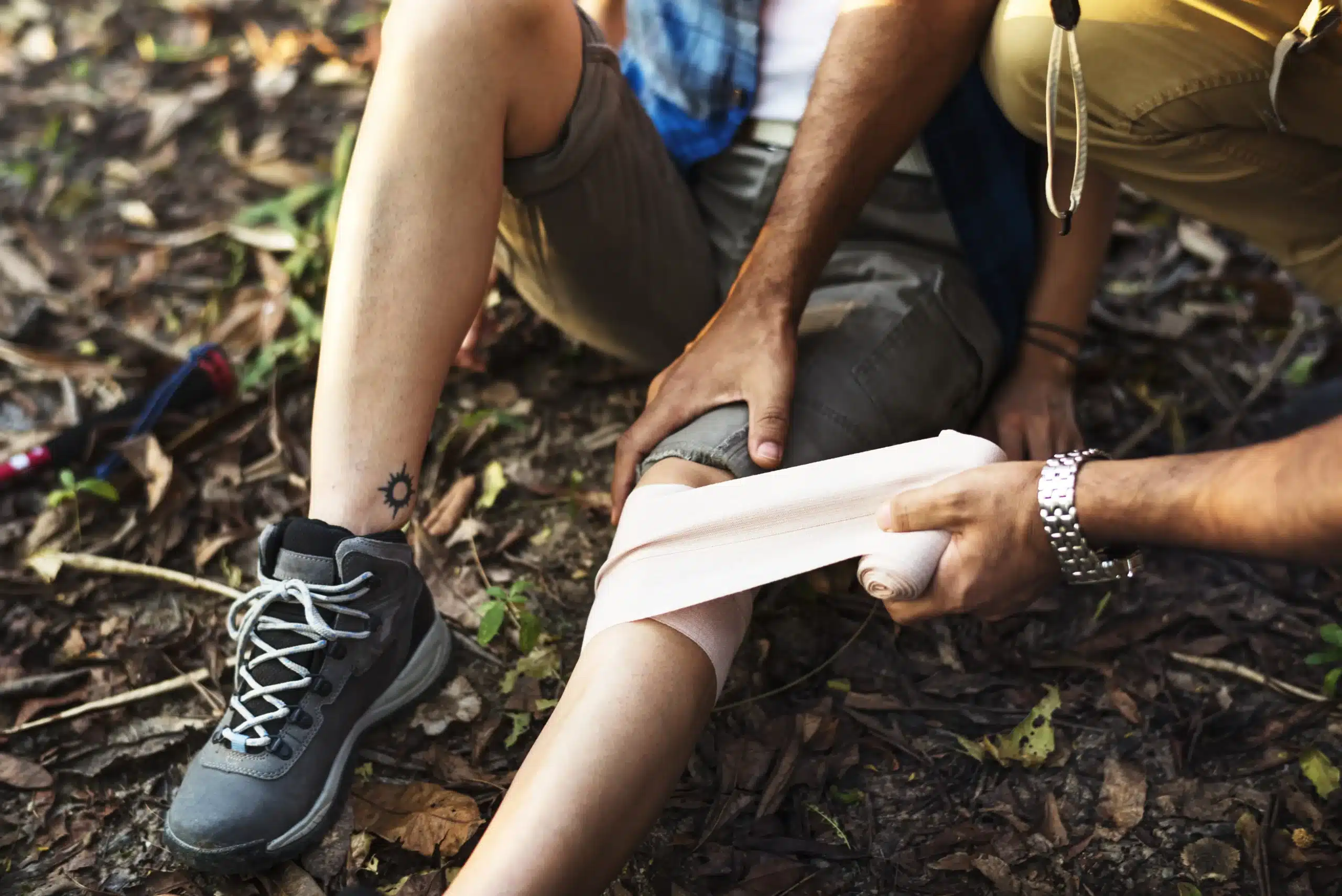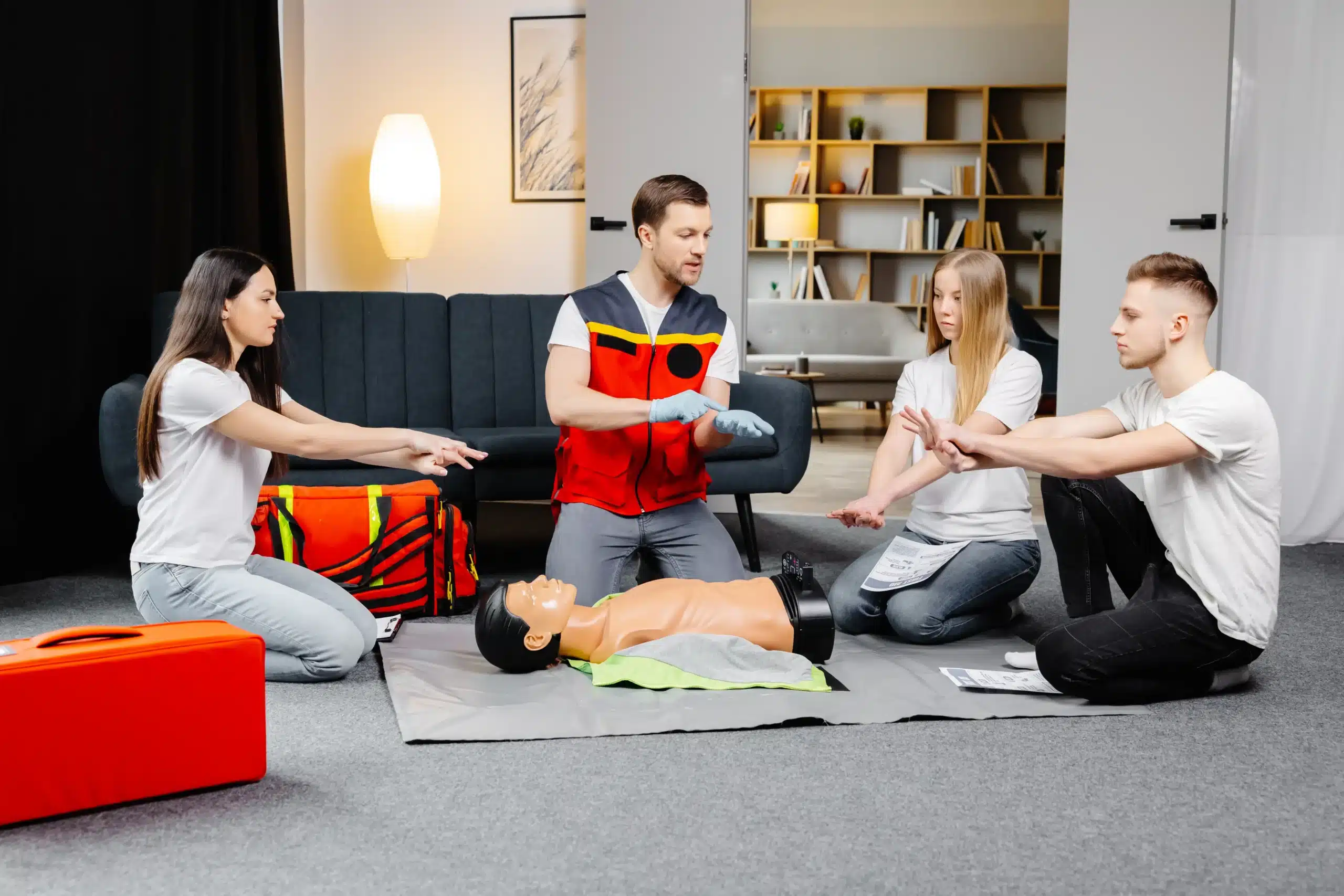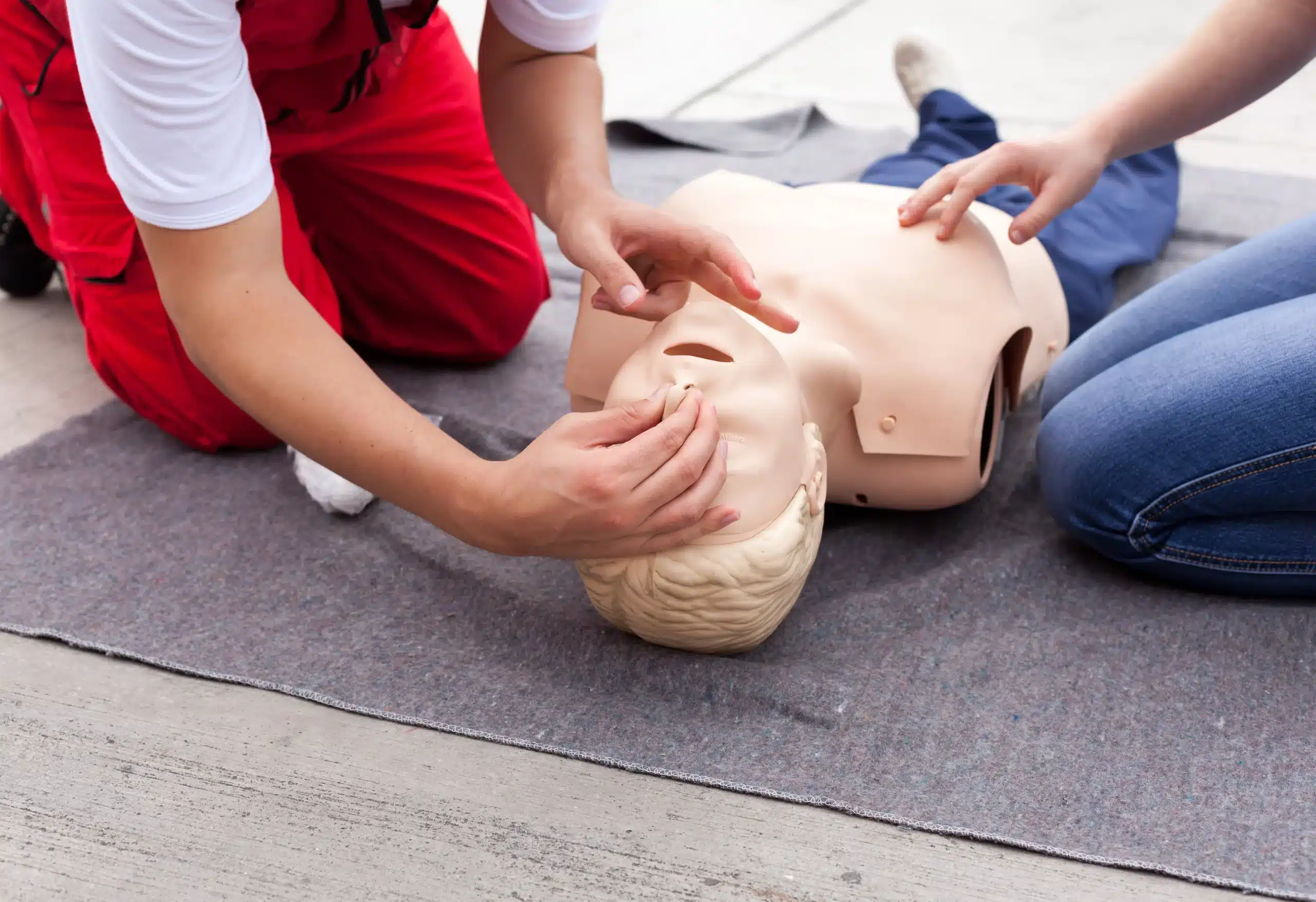Emergencies can happen anytime, anywhere. Are you prepared? BLS classes in Vallejo offer the training you need to respond effectively and potentially save a life. This guide will walk you through the process of finding the right BLS class for your needs, whether you’re a healthcare provider, a first responder, or simply someone who wants to be prepared for the unexpected. We’ll cover the different types of BLS certifications, the skills you’ll learn, and the various training providers in Vallejo. We’ll also discuss the costs, schedules, and what to expect during a typical BLS class. Get ready to empower yourself with the knowledge and confidence to make a difference in a crisis.
Key Takeaways
- BLS certification provides essential life-saving skills: Learn to respond effectively to emergencies like cardiac arrest and choking, whether for personal preparedness or professional requirements. Find the right course type, from basic CPR/AED to comprehensive provider training.
- Select the right BLS course for your needs: Consider factors like provider reputation, online vs. in-person formats, and cost. AHA-certified courses ensure high-quality, recognized training. Research local providers to find the best fit.
- Maintain your BLS skills through recertification: Keep your skills sharp and up-to-date with regular renewal courses. Leverage online resources and practice opportunities to stay proficient and confident in your abilities.
What is BLS & Why is it Important?
What is BLS?
Basic Life Support (BLS) teaches you the essential skills to respond to life-threatening emergencies. It focuses on providing immediate care until more advanced medical professionals arrive. Think of it as the foundation for saving a life. BLS certification covers core techniques like CPR (cardiopulmonary resuscitation), recognizing the signs of a heart attack or stroke, and how to use an AED (automated external defibrillator). These skills are crucial for responding effectively to sudden cardiac arrest and other emergencies. BLS courses also cover how to handle choking and other breathing emergencies. Many healthcare jobs and other professions require BLS certification.
Who Needs BLS Certification?
BLS certification is a must-have for many professionals, especially those in healthcare. Doctors, nurses, paramedics, and other medical personnel need these skills to provide immediate care in critical situations. It’s also often required for firefighters, law enforcement officers, lifeguards, and other first responders. Even if your job doesn’t specifically require it, having BLS certification can be a valuable asset. It shows you’re prepared to handle emergencies and can provide assistance when it’s needed most. If you’re in Vallejo, consider taking a BLS CPR class offered by the American Heart Association to be prepared for cardiac emergencies. Knowing BLS can make a real difference in someone’s life. It empowers you to act quickly and confidently in a crisis, potentially saving a life.
BLS Classes in Vallejo: What are Your Options?
Finding the right BLS class can feel overwhelming, but it doesn’t have to be. Here’s a breakdown of the different types of BLS certification available in Vallejo. We’ll cover everything from the comprehensive BLS Provider course to the more general Heartsaver CPR AED training.
AHA BLS Provider
The American Heart Association (AHA) BLS Provider course sets the standard for healthcare professionals. This course covers core life-saving skills, including high-quality CPR for adults, children, and infants, AED use, and teamwork during resuscitation. AHA BLS Provider certification is widely recognized and often a job requirement in healthcare. It emphasizes a systematic approach to resuscitation to ensure consistent and effective care. If you’re pursuing a career in healthcare, this is likely the certification you’ll need.
BLS for Healthcare Providers
Geared specifically toward healthcare professionals—doctors, nurses, paramedics, and other medical personnel—the BLS for Healthcare Providers course provides the training you need to handle life-threatening emergencies. This course delves into the science behind resuscitation and highlights the importance of early intervention. You’ll learn advanced techniques for airway management, ventilation, and cardiac monitoring. It’s always a good idea to check with your employer or licensing board to confirm that the AHA BLS Provider course aligns with their specific requirements. This ensures your certification is valid and up-to-date.
Heartsaver CPR AED
The Heartsaver CPR AED course is a perfect fit for those outside of healthcare who want to learn essential life-saving skills. This course focuses on CPR and AED use for adults, children, and infants in everyday settings. It’s a smart choice for teachers, coaches, community members, and anyone who wants to be prepared for an emergency. While not usually required for healthcare jobs, Heartsaver CPR AED certification equips you with valuable skills and confidence should a critical situation arise.
Inside a BLS Class: What to Expect
So, you’ve decided to take a BLS class—great choice! Knowing what awaits can help you feel prepared and confident. Here’s a glimpse inside a typical BLS course:
Skills You’ll Learn
BLS certification focuses on essential life-saving skills for various emergencies. You’ll learn how to recognize the signs of a cardiac arrest, stroke, and choking. The course emphasizes high-quality CPR for adults, children, and infants, including how to use an AED (automated external defibrillator). You’ll also practice rescue breathing and learn techniques for relieving choking. BLS training also covers team dynamics and communication, crucial for effective response in real-life situations. This prepares you to handle more complex cases, such as cardiac arrests in clinical settings, where immediate and proficient care is critical.
Class Format & Duration
BLS classes in Vallejo typically blend theory and hands-on practice. Expect a combination of lectures, demonstrations, and interactive simulations. You’ll have the opportunity to practice your skills on mannequins and learn in a supportive environment. The typical duration of these courses usually ranges from four to six hours, depending on the provider and format. This timeframe allows for comprehensive instruction and ample practice time.
Certification: How it Works
After successfully completing the course and skills test, you’ll receive your official American Heart Association (AHA) BLS Provider certification card. Many providers, like Vallejo CPR Classes, offer same-day certification, so you can leave with your credentials in hand. This certification is valid for two years, after which you’ll need a renewal course to stay current.
Find the Right BLS Class in Vallejo
Finding the perfect BLS class in Vallejo depends on several factors, from the provider’s reputation to the class format. Let’s break down what to consider when making your decision.
Choosing a Provider: Key Factors
Look for a training center offering American Heart Association (AHA) certified courses. AHA certification is widely recognized and ensures your training meets the highest standards. Also, check if the provider offers courses tailored to healthcare providers or the general public, depending on your needs. Consider factors like class size and instructor experience. Smaller classes often allow for more personalized attention. Safety Training Seminars, for example, is known for its commitment to excellent customer service and competitive pricing.
Online vs. In-Person: Which is Right for You?
BLS classes in Vallejo are offered in both online and in-person formats. In-person classes provide valuable hands-on practice and direct interaction with instructors. This format is ideal for those who learn best in a traditional classroom setting and appreciate the immediate feedback. If your schedule is tight, an online BLS course may offer more flexibility. Consider which learning environment best suits your needs and preferences. Some providers even offer blended learning, combining online modules with in-person skills sessions.
Top BLS Providers in Vallejo
Safety Training Seminars
Safety Training Seminars is a woman-owned, AHA Training Center committed to providing high-quality BLS training. They offer a range of AHA courses, including BLS, ACLS, PALS, CPR, and First Aid. Their focus on quality instruction and customer satisfaction makes them a top choice for BLS certification in Vallejo. Check their website for upcoming class schedules and pricing.
Vallejo CPR Classes
Vallejo CPR Classes offers the convenience of same-day certification upon completion of the course and skills test. This is a great option if you need your BLS certification quickly. They provide AHA-certified courses and focus on equipping participants with the skills to respond effectively in emergencies. Explore their website for more information on course offerings and registration.
American Red Cross
The American Red Cross is a well-respected organization offering BLS certification courses. Their training is widely recognized and accepted, making it a reliable choice for individuals in various professions, including healthcare, firefighting, and law enforcement. Visit their site to find a class near you.
Bay Area CPR
Bay Area CPR offers a variety of life-saving courses, including BLS. They are known for their competitive pricing and commitment to delivering high-quality training. If you’re looking for an affordable option without compromising on the quality of instruction, Bay Area CPR is worth considering. Their website provides details on course content, schedules, and pricing.
BLS Class Costs & Schedules
How Much Do Classes Cost?
BLS CPR classes, especially those following American Heart Association guidelines, are crucial for equipping people to handle cardiac emergencies. While costs vary, classes are generally designed to be accessible. For the most accurate pricing on BLS courses in Vallejo, contact local providers like Safety Training Seminars or check the American Heart Association website. Knowing the cost upfront helps you budget and plan your training.
Discounts & Group Rates
Want to save on BLS certification? Many training centers in Vallejo, including Safety Training Seminars, offer discounts. Students in medical, EMT, or dental programs can often find reduced pricing. See Safety Training Seminars’ discounts for details. Group discounts are also common for organizations training multiple employees, making it more affordable to prepare your team. Safety Training Seminars guarantees the lowest prices for BLS, PALS, ACLS, NRP, CPR, and First Aid courses in the area.
Flexible Scheduling
Finding a BLS class that fits your schedule is key. BLS, ACLS, PALS, CPR, and First Aid certification courses are offered throughout the week in Vallejo and surrounding areas. This makes it easier to find a class that works, regardless of your other commitments. Explore the Safety Training Seminars course schedule to find a time that suits your availability and learning preferences. They offer a variety of options to accommodate different needs.
Get Ready for Your BLS Class
So, you’ve decided to take a BLS class—fantastic! Here’s what you should know to prepare.
Prerequisites & Requirements
Good news: there aren’t any strict prerequisites for BLS certification. Whether you’re a healthcare professional or simply want to learn life-saving skills, you’re welcome to sign up. BLS classes in Vallejo, offered by providers like Safety Training Seminars, are designed for students of all backgrounds. These courses, often based on American Heart Association guidelines, prepare people to handle cardiac emergencies. While the classes are comprehensive, a basic understanding of medical terminology can be helpful. Check with your chosen provider—some may offer introductory resources.
Study Materials & Resources
Many providers use the American Heart Association’s curriculum. You might receive a student handbook before class. Some instructors also recommend familiarizing yourself with the American Heart Association RQI program, a valuable self-directed learning tool that can supplement your in-class training. RQI is especially popular with healthcare providers working toward BLS, ACLS, and PALS certification. Don’t feel overwhelmed—your instructor will guide you through everything.
Tips for BLS Training Success
BLS classes combine instruction with hands-on practice. To make the most of your training, come prepared to participate actively. Ask questions, and don’t hesitate to request clarification if anything is unclear. Many providers, including Safety Training Seminars, offer classes throughout the week for maximum flexibility. If your provider offers pre-course videos, watch them! Even a quick review can significantly improve your understanding and skill retention, which can boost your confidence for the skills test.
Getting Your BLS Certification
Once you’ve completed your BLS course, you’ll demonstrate your skills and knowledge through a skills test and a written exam. The skills test usually involves performing CPR and other BLS techniques on a manikin. Some providers, like Bay Area CPR, use voice-activated manikins, allowing you to practice at your own pace with assistance available by phone. The written exam covers the key concepts and protocols of BLS. After successfully completing both, you’ll receive your BLS certification card. Some centers, like Vallejo CPR Classes, offer same-day certification.
Skills Test & Written Exam
The skills test focuses on the practical application of techniques learned during the course. You’ll be evaluated on performing CPR, using an AED, and providing other life-saving interventions. The written exam tests your understanding of BLS principles and protocols.
Certification Renewal
Your BLS certification is generally valid for two years. To renew, you’ll take a recertification course covering the same core content as the initial BLS course, refreshing your skills and knowledge. Keep this in mind when choosing a provider and comparing courses. ABC Health and Safety offers more information on the differences between initial certification and renewal.
Physical Needs & Accommodations
Physical Demands of BLS Training
BLS training isn’t just about learning techniques; it involves a physical component, especially when practicing CPR. You’ll be performing chest compressions and other maneuvers that can be tiring. It’s important to be aware of your physical capabilities before starting a BLS class. If you have any concerns about pre-existing health conditions, it’s always a good idea to chat with your doctor or the training provider beforehand. They can offer advice and discuss any necessary modifications. Knowing your limits ensures you can participate safely and effectively.
Accommodations
Most BLS training providers understand that people have different needs and limitations. If you need to adjust the training schedule due to a physical limitation or other circumstances, reach out to the provider. Many offer flexible options, like rescheduling classes without penalty. Safety Training Seminars, for example, prides itself on excellent customer service and is likely to work with you. Don’t hesitate to ask about accommodations – they want you to succeed in the training. Finding a schedule that works for you makes the learning process smoother and less stressful.
Level Up Your BLS Learning
Want to make the most of your BLS training? Here are a few ways to enhance your learning experience and truly master these life-saving skills:
Self-Testing Your Skills
One of the best ways to build confidence and proficiency in BLS is through self-testing. Some providers, like Bay Area CPR, offer access to voice-activated mannequins for independent practice. This allows you to rehearse the skills at your own pace and identify any areas needing extra support. Many training centers also offer open practice sessions. Don’t hesitate to contact your provider and ask about self-testing options.
Online Learning
Many BLS courses now incorporate online learning, often using the RQI program. You’ll typically complete this portion before attending the in-person skills session. Working through the online videos and modules beforehand can significantly improve your understanding and increase your chances of acing the skills check. This blended learning approach lets you absorb information at your own speed and arrive at the in-person session prepared for hands-on practice.
Hands-on Practice
While online learning is valuable, hands-on practice is essential for mastering BLS. BLS classes in Vallejo typically include several hours of hands-on training, guided by experienced healthcare professionals. This is your opportunity to apply what you’ve learned, ask questions, and receive personalized feedback. Take full advantage of this time to refine your technique and become comfortable performing BLS in a realistic setting. Look for courses that align with American Heart Association standards for high-quality, up-to-date instruction.
BLS: What’s Next?
Continuing Education
So, you’ve earned your BLS certification—congratulations! This is a significant achievement, and it opens doors to various career paths, especially in healthcare, firefighting, and law enforcement. But your learning journey doesn’t end here. Like many certifications, BLS certification is valid for two years. To maintain your skills and keep your credentials current, you’ll need to recertify through a BLS renewal course before your certification expires. These recertification courses cover updates to guidelines and best practices, ensuring you’re always equipped to provide the most effective care. Think of it as a refresher course—a way to stay sharp and confident in your abilities.
Using BLS in Real Life
BLS isn’t just about checking a box for your job. It’s about being prepared to make a real difference in someone’s life. These skills empower you to respond effectively in critical situations, from assisting a family member at home to providing crucial support in a medical setting. BLS training equips you to handle complex cases, such as cardiac arrests, where immediate and proficient care is essential. At Safety Training Seminars, you’ll receive your official American Heart Association (AHA) certification card the same day you complete your course and skills test, so you’re ready to put your training into action. Whether you’re a healthcare professional, a workplace safety coordinator, or simply someone who wants to be prepared for anything, BLS provides you with the knowledge and skills that can truly make a difference. Knowing how to perform BLS can give you peace of mind, knowing you have the tools to potentially save a life.
Related Articles
- Online BLS Classes in American Canyon: Your Guide – Napa CPR Classes
- BLS Certification in American Canyon: Your Complete Guide – Napa CPR Classes
- CPR Classes in Vallejo: Your Complete Guide – Napa CPR Classes
- American Heart Association (AHA) Courses in Vallejo – Napa CPR Classes
- ACLS Courses in Vallejo: Your Complete Guide – Napa CPR Classes
Frequently Asked Questions
What’s the difference between BLS for Healthcare Providers and Heartsaver CPR AED?
BLS for Healthcare Providers is a more comprehensive course designed for medical professionals. It covers a broader range of skills, including advanced airway management and team dynamics during resuscitation. Heartsaver CPR AED focuses on essential CPR and AED use for adults, children, and infants, making it suitable for anyone wanting to learn basic life-saving skills, even those outside the healthcare field. Both are valuable, but the best choice depends on your specific needs and career goals.
How long does BLS certification last, and how do I renew it?
BLS certification is typically valid for two years. To renew, you’ll need to take a recertification course before your current certification expires. This refresher course covers the latest guidelines and techniques, ensuring your skills remain up-to-date.
Is online BLS training as effective as in-person classes?
Both online and in-person BLS classes have their advantages. Online courses offer flexibility, allowing you to learn at your own pace and convenience. In-person classes provide hands-on practice and direct interaction with instructors. Some providers offer a blended learning approach, combining online modules with in-person skills sessions for a well-rounded experience. The best format depends on your learning style and preferences.
What if I have physical limitations? Can I still take a BLS class?
Absolutely! Most BLS training providers are happy to accommodate individual needs. If you have any physical limitations or require adjustments to the training schedule, reach out to the provider. They can discuss options and modifications to ensure you can participate comfortably and safely.
How can I practice my BLS skills after completing the course?
Regular practice is key to maintaining your skills and confidence. Many providers offer open practice sessions or access to training resources like manikins for self-directed learning. You can also review the course materials and utilize online resources to reinforce your knowledge and stay sharp.
